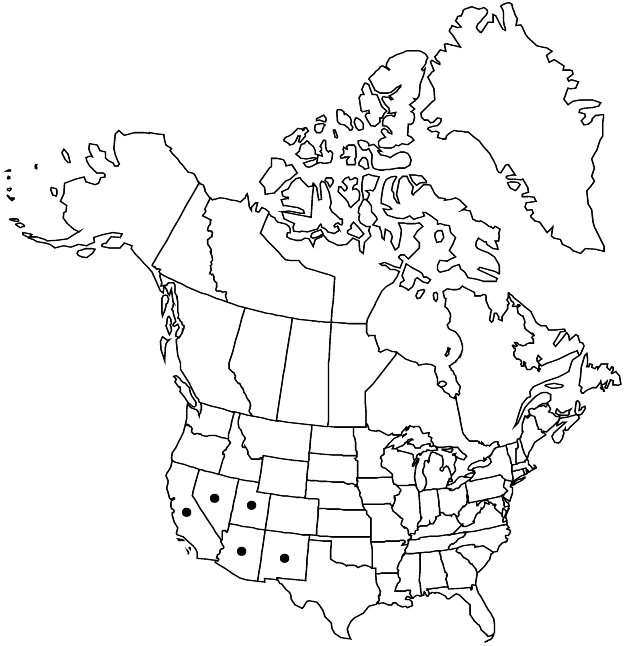Difference between revisions of "Eriogonum deflexum"
in J. C. Ives, Rep. Colorado R. 4: 24. 1861.
RevisionBot (talk | contribs) m (Bot: Adding category Revision Pending) |
RevisionBot (talk | contribs) m (Bot: Adding category Revised Since Print) |
||
| (One intermediate revision by one other user not shown) | |||
| Line 1: | Line 1: | ||
{{Treatment/ID | {{Treatment/ID | ||
|accepted_name=Eriogonum deflexum | |accepted_name=Eriogonum deflexum | ||
| − | |accepted_authority=Torrey | + | |accepted_authority=Torrey |
|publications={{Treatment/Publication | |publications={{Treatment/Publication | ||
|title=in J. C. Ives, Rep. Colorado R. | |title=in J. C. Ives, Rep. Colorado R. | ||
| Line 8: | Line 8: | ||
}} | }} | ||
|common_names=Skeleton weed | |common_names=Skeleton weed | ||
| + | |special_status={{Treatment/ID/Special_status | ||
| + | |code=F | ||
| + | |label=Illustrated | ||
| + | }} | ||
|basionyms= | |basionyms= | ||
|synonyms= | |synonyms= | ||
| Line 20: | Line 24: | ||
-->{{Treatment/Body | -->{{Treatment/Body | ||
| − | |distribution= | + | |distribution=Ariz.;Calif.;N.Mex.;Nev.;Utah;including Mexico. |
|discussion=<p>Varieties 3 (3 in the flora).</p><!-- | |discussion=<p>Varieties 3 (3 in the flora).</p><!-- | ||
--><p><i>Eriogonum deflexum</i> is common and often weedy throughout most of its range. It is an important source of small seed for birds. The reported use of the stem (M. L. Zigmond 1981, as E. insigne) by the Kawaiisu people as a smoking pipe is incorrect; the taxon in point was actually <i>E. deflexum </i>var.<i> baratum</i>. The desert metalmark butterfly (Apodemia mormo deserti) is found in association with <i>E. deflexum</i>.</p> | --><p><i>Eriogonum deflexum</i> is common and often weedy throughout most of its range. It is an important source of small seed for birds. The reported use of the stem (M. L. Zigmond 1981, as E. insigne) by the Kawaiisu people as a smoking pipe is incorrect; the taxon in point was actually <i>E. deflexum </i>var.<i> baratum</i>. The desert metalmark butterfly (Apodemia mormo deserti) is found in association with <i>E. deflexum</i>.</p> | ||
| Line 53: | Line 57: | ||
-->{{#Taxon: | -->{{#Taxon: | ||
name=Eriogonum deflexum | name=Eriogonum deflexum | ||
| − | |authority=Torrey | + | |authority=Torrey |
|rank=species | |rank=species | ||
|parent rank=subgenus | |parent rank=subgenus | ||
| Line 59: | Line 63: | ||
|basionyms= | |basionyms= | ||
|family=Polygonaceae | |family=Polygonaceae | ||
| − | |distribution= | + | |distribution=Ariz.;Calif.;N.Mex.;Nev.;Utah;including Mexico. |
|reference=None | |reference=None | ||
|publication title=in J. C. Ives, Rep. Colorado R. | |publication title=in J. C. Ives, Rep. Colorado R. | ||
|publication year=1861 | |publication year=1861 | ||
| − | |special status= | + | |special status=Illustrated |
| − | |source xml=https:// | + | |source xml=https://bitbucket.org/aafc-mbb/fna-data-curation/src/2e0870ddd59836b60bcf96646a41e87ea5a5943a/coarse_grained_fna_xml/V5/V5_810.xml |
|subfamily=Polygonaceae subfam. Eriogonoideae | |subfamily=Polygonaceae subfam. Eriogonoideae | ||
|genus=Eriogonum | |genus=Eriogonum | ||
| Line 75: | Line 79: | ||
[[Category:Treatment]] | [[Category:Treatment]] | ||
[[Category:Eriogonum subg. Ganysma]] | [[Category:Eriogonum subg. Ganysma]] | ||
| − | [[Category: | + | [[Category:Revised Since Print]] |
Latest revision as of 17:05, 6 November 2020
Herbs, erect to spreading, annual, (0.5–)1–10(–20) dm, glabrous, occasionally glaucous, greenish to grayish. Stems: caudex absent; aerial flowering stems erect, solid or occasionally hollow and fistulose, 0.3–3(–4) dm, glabrous, occasionally glaucous. Leaves basal; petiole 1–7 cm, usually floccose; blade cordate to reniform or nearly orbiculate, 1–2.5(–4) × 2–4(–5) cm, densely white-tomentose abaxially, less so to floccose or subglabrous and grayish to greenish adaxially, margins entire. Inflorescences cymose, open to diffuse, flat-topped, spreading, hemispheric or narrowly erect and strict with whiplike branches, 10–90(–180) × 5–50 cm; branches glabrous, occasionally glaucous; bracts 3, scalelike, 1–3 × 0.5–1.5 mm. Peduncles absent or deflexed, rarely some ± erect distally, straight, slender to stout, 0.1–1.5 cm, glabrous. Involucres narrowly turbinate to turbinate, 1.5–2.5(–3) × 1–2.5 mm, glabrous; teeth 5, erect, (0.2–)0.5–1 mm. Flowers 1–2.5 mm; perianth white to pink, with greenish to reddish midribs, becoming pinkish to reddish, glabrous; tepals dimorphic, those of outer whorl oblong or cordate to ovate, those of inner whorl lanceolate to narrowly ovate; stamens included, 1–1.5 mm; filaments glabrous or sparsely pilose proximally. Achenes brown to dark brown, 3-gonous, (1.5–)2–3 mm, glabrous.
Distribution

Ariz., Calif., N.Mex., Nev., Utah, including Mexico.
Discussion
Varieties 3 (3 in the flora).
Eriogonum deflexum is common and often weedy throughout most of its range. It is an important source of small seed for birds. The reported use of the stem (M. L. Zigmond 1981, as E. insigne) by the Kawaiisu people as a smoking pipe is incorrect; the taxon in point was actually E. deflexum var. baratum. The desert metalmark butterfly (Apodemia mormo deserti) is found in association with E. deflexum.
Selected References
None.
Lower Taxa
Key
| 1 | Involucres (2-)2.5-3 mm, narrowly turbinate; peduncles (0.3-)0.5-1.5 cm; stems fistulose; s and ec California, s Nevada | Eriogonum deflexum var. baratum |
| 1 | Involucres 1.5-2.5 mm, turbinate; peduncles absent or 0.1-0.5 cm; stems not fistulose; Arizona, s and ec California, Nevada, sw New Mexico, w Utah | > 2 |
| 2 | Tepals cordate to ovate; Arizona, s Califonia, s Nevada, sw New Mexico, w Utah | Eriogonum deflexum var. deflexum |
| 2 | Tepals oblong; ec California, Nevada | Eriogonum deflexum var. nevadense |